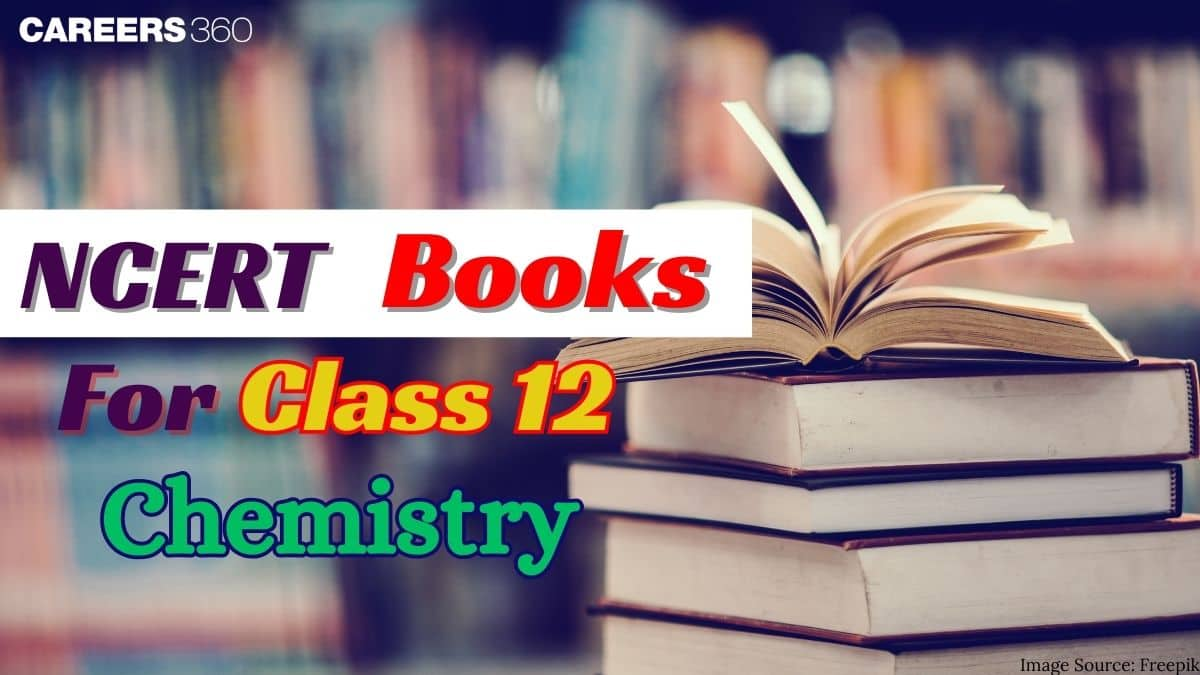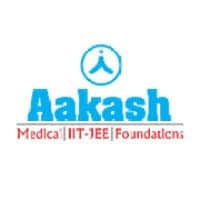Aakash Repeater Courses
ApplyTake Aakash iACST and get instant scholarship on coaching programs.
Did you know that from digestion to the functioning of the brain, approx 37 trillion chemical reactions happen in the human body every second? This is what Chemistry is, from understanding everyday phenomena to carrying out nuclear reactions, it is everywhere. Class 12 NCERT Chemistry book gives the reason behind everyday phenomena and life processes like interactions of medicines with the body, formation of complex organic compounds, generation of electricity from chemical reactions, etc.

Chemistry textbook is divided into two parts and each part contains 5 chapters. It is a blend of Theory and practical which covers important topics like electrochemistry, chemical kinetics, coordination compounds, d- and f-block elements, biomolecules, etc. The content inside the Chemistry textbook is aligned with the CBSE syllabus, and questions in board exams are asked directly from NCERT apart from that NCERT books are very helpful for competitive exams like NEET, JEE, and BITSAT. Students can also refer NCERT Solutions for doubt clarification, practice and conceptual clarity.
Get the latest NCERT textooks from the links given beow, they are free of cost and questions from NCERT are asked directly in exams:
|
Chemistry I (English Medium) |
|
Rasayan Vigyan Bhag (Hindi Medium) |
|
Chemistry II (English Medium) |
|
Rasayan Vigyan Bhag (Hindi Medium) |
Students can refer to the table below for the Chemistry Chapter wise pdf:
|
NCERT Chemistry Book |
English Medium |
Hindi Medium |
|
Chemistry - I |
Unit 1: Solutions Unit 2: Electrochemistry Unit 3: Chemical Kinetics Unit 4: The d and f block Elements Unit 5: Coordination Compounds |
विलयन वैद्युतरसायन रासायनिक बलगतिकी d- एवं f- ब्लॉक के तत्व उपसहसंयोजन यौगिक |
|
Chemistry - II |
Unit 6: Haloalkanes and Haloarenes Unit 7: Alcohols Phenols and Ethers Unit 8: Aldehydes, Ketones and Carboxylic Acids Unit 9: Amines Unit 10:Biomolecules |
हैलोऐल्केन तथा हैलोऐरीन ऐल्कोहॉल, फ़ीनॉल तथा ईथर एल्डिहाइड, कीटोन एवं कार्बोक्सिलिक अम्ल ऐमीन जैव-अणु |
Also, check
NCERT Class 12 Chemistry chapterwise breakdown are tabulated below.Students are advised to prepare for the exams accordingly.
|
Chapter Name |
Important Topics |
|
Chapter 1 - Solutions |
1.1 Types of solutions 1.2 Expressing the concentration of solutions 1.3 Solubility 1.4 Vapour pressure of liquid solutions 1.5 Ideal and Non-Ideal solutions 1.6 Colligative properties and determination of molar mass 1.7 Abnormal molar mass |
|
Chapter 2 - Electrochemistry |
2.1 Electrochemical cells 2.2 Galvanic cells 2.3 Nernst equation 2.4 Conductance of Electrolytic Solutions 2.5 Electrolytic Cells and Electrolysis 2.6 Batteries 2.7 Fuel Cells 2.8 Corrosion |
|
Chapter 3 - Chemical Kinetics |
3.1 Rate of a chemical reaction 3.2 Factors Influencing Rate of a Reaction 3.3 Integrated Rate Rate Rate Equations 3.4 Temperature Dependence of the Rate of a Reaction 3.5 Collision Theory of Chemical Reactions |
|
Chapter 4 - The D- And F- Block Elements |
4.1 Position in the Periodic Table 4.2 Electronic Configurations of the d-Block Elements 4.3 General Properties of the Transition Elements (d-Block) 4.4 Some Important Compounds of Transition Element 4.5 The Lanthanoids 4.6 The Actinoids 4.7 Some Applications of d- and f-Block Elements |
|
Chapter 5 - Coordination Compounds |
5.1 Werner’s theory of coordination compounds 5.2 Definitions of Some Important Terms On Coordination Compound 5.3 Nomenclature of Coordination Compounds 5.4 Isomerism in Coordination Compounds 5.5 Bonding in Coordination Compounds 5.6 Bonding in Metal Metal Carbonyls 5.7 Importance and Applications of of Coordination Compounds |
|
Chapter 6 - Haloalkanes And Haloarenes |
6.1 Classification 6.2 Nomenclature 6.3 Nature of C-X Bond 6.4 Methods of preparation of haloalkanes 6.5 Preparation of Haloarenes 6.6 Physical Properties 6.7 Chemical Reactions 6.8 Polyhalogen Compounds |
|
Chapter 7 - Alcohols, Phenols And Ether |
7.1 Classification 7.2 Nomenclature 7.3 Structures of Functional Groups 7.4 Alcohols and Phenol 7.5 Some Commercially Important Alcohols 7.6 Ethers |
|
Chapter 8- Aldehydes, Ketones And Carboxylic Acid |
8.1 Nomenclature, the structure of the carbonyl group 8.2 Preparation of Aldehydes and Ketones 8.3 Physical Properties 8.4 Chemical Reaction 8.5 Uses of Aldehydes and Ketones 8.6 Nomenclature and Structure of Carboxyl Group 8.7 Methods of preperation of Carboxylic acids 8.8 Physical Properties 8.9 Chemical Reactions 8.10 Uses of Carboxylic Acids |
|
Chapter 9 - Amines |
9.1 Structure of amines 9.2 Classification 9.3 Nomenclature 9.4 Preparation of Amines 9.5 Physical Properties 9.6 Chemical Reactions 9.7 Method of Preparation of Diazoniun Salts 9.8 Physical Properties 9.9 Chemical Reactions 9.10 Importance of Diazonium Salts in Synthesis of Aromatic Compounds |
|
Chapter 10 - Biomolecules |
10.1 Carbohydrates 10.2 Proteins 10.3 Enzymes 10.4 Vitamins 10.5 Nucleic Acids 10.6 Hormones |
Students can download a PDF of the chemistry book for class 11 by visiting the official website of NCERT or by clicking on the link given below. Follow the steps ahead to download NCERT books for class 11 Chemistry pdf
Visit the official NCERT Website at ncert.nic.in.
On the home page click on 'Publications' then choose 'PDF (I-XII) option.
Choose Class XII, choose Chemistry, and the pick the name of desired textbook.
Click ‘Go’: This will display the complete list of Class XII Chemistry book chapters.
Click on the chapter-wise links to download the content.
The links in the table below will take you to the chapter-wise NCERT solutions. Solve them for better learning!
While NCERT Chemistry Class 12 textbooks are essential for CBSE board preparation, referring to additional books can greatly enhance your understanding and improve problem-solving skills. Reference books provide in-depth explanations, extra practice questions, and valuable insights for competitive exam preparation.
Here are some highly recommended best reference books for class 12 chemistry:
Pradeep’s Chemistry
OP Tandon
Xam Idea
All In One Chemistry
Understand the Marking Scheme: Study the exam pattern carefully to know the weightage of each topic.
Complete the Syllabus Early: Aim to finish the NCERT Chemistry textbook at least two months before the exam to allow ample time for revision.
Practice Regularly: Solve previous years' question papers and sample papers to become familiar with the exam format and improve time management.
Prioritize Revision: Consistent revision is crucial for reinforcing concepts and boosting retention.
Also read -
NCERT Books for Class 12 Chemistry are textbooks provided by the National Council of Educational Research and Training (NCERT) in India. These books cover essential concepts, theories, and experiments in chemistry aligned with the CBSE curriculum.
You can download the NCERT Chemistry Class 12 PDF for free by visiting the official NCERT website or other educational platforms that provide government-approved resources.
Using NCERT Books for Class 12 Chemistry is important because they are designed specifically to help students systematically understand the concepts. These books cover the syllabus comprehensively and are often referred to for board exams, making them essential for effective exam preparation.
Yes, NCERT Chemistry books are generally considered sufficient for exam preparation, especially for the CBSE board exams.
Yes, printed versions of the NCERT Chemistry Class 12 book are available for purchase through various educational bookshops and online retailers.

Take Aakash iACST and get instant scholarship on coaching programs.

This ebook serves as a valuable study guide for NEET 2025 exam.

This e-book offers NEET PYQ and serves as an indispensable NEET study material.

As per latest syllabus. Physics formulas, equations, & laws of class 11 & 12th chapters

As per latest syllabus. Chemistry formulas, equations, & laws of class 11 & 12th chapters
As per latest 2024 syllabus. Study 40% syllabus and score upto 100% marks in JEE